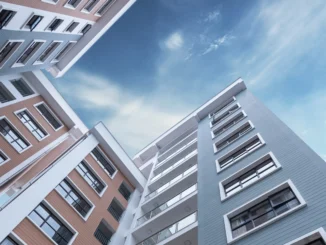
A recent report from Yardi Matrix examined the price appreciation seen over the last decade for multifamily properties which were resold frequently. These tended to be Class B and Class C properties targeted for their value-add potential.
The wide view
In addition to looking at a specific subset of multifamily property sales, the report provides statistics on trends in the broader multifamily property market since 2007. It tells a story of increases in numbers of units sold, total sales volumes and prices per unit.
The low point for the multifamily property market was the year 2009. Total sales transactions in that year were $13.3 billion, the price per unit was $62,344 and the number of units sold was under 300,000. In 2021, total sales transactions reached $215.3 billion, the price per unit was $192,105 and 1.34 million units changed hands.
Filtering the sales data
Yardi Matrix studied the appreciation achieved in the resale of properties that had been sold three or more times over the past 10 years. These comprised about 5.3 percent of the properties in their dataset, so the properties which are the focus of this report comprise a small sub-set of the multifamily property market. Yardi Matrix found that the compound average growth rate (CAGR) in the sales prices of these multifamily properties over the study period was 17.7 percent nationally, well above the rate of rent growth.
Yardi Matrix divides properties into two broad categories, so-called “lifestyle” properties, whose residents could afford to buy their homes but choose not to, and “renter by necessity” (RBN) properties, which are mid-range and workforce housing. Three times as many RBN properties were sold three or more times than were lifestyle properties. The RBN properties achieved higher rates of price appreciation with an average CAGR of 20 percent compared to only 11 precent for lifestyle properties.
The report looks at how the CAGR varied by the size of the property being resold. It found that the highest returns were achieved on properties of between 100 and 149 units, with an average CAGR of 23 percent. Properties of 400+ units generally achieved the lowest returns, with an average CAGR of 14 percent.
While the report indicates that robust returns can be achieved by targeting low-end properties in a value-add strategy, it does not address the high level of additional investment that this strategy requires in order to achieve its added value. Part of the high rate of price appreciation achieved is just a reflection of the money invested in upgrading the property. Data on this additional investment may not be a part of the Yardi Matrix data set, but it would be interesting to see how its inclusion would affect the apparent rate of return on investment.
Sanity prevails
The report also considers how the current state of the multifamily property market compares to that just prior to the housing meltdown of 2008-2009. It suggests that today’s market is less leveraged and that today’s underwriting is based on more realistic projections than was true prior to the crash. It anticipates that rising interest rates and uncertainty over the direction of the economy will dampen multifamily property investment activity in the months ahead.
The full Yardi Matrix report contains additional data on regional and metro-level results from their study.
Source: Realestateinvestorpulse.com



